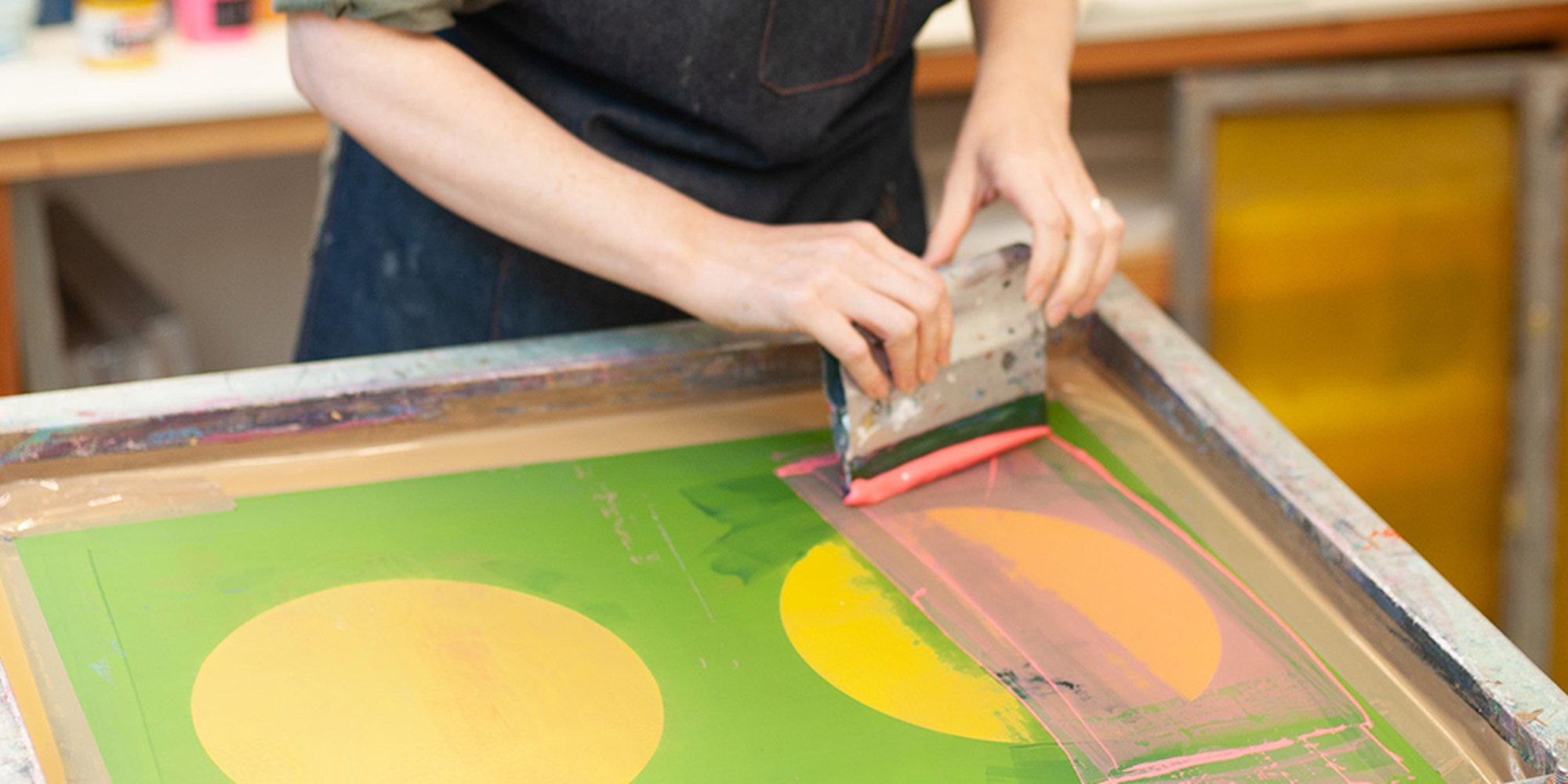The Crucial Overview to Recognizing Screen Printing and Its Versatile Uses
Screen printing has an abundant history that dates back to old times, progressing into a sophisticated strategy utilized throughout various sectors today. This overview explores the details of the screen printing procedure, describing its applications in marketing, fashion, and home decoration - 10:9 Design reviews. Recognizing these principles can open up creative potential for both creative and commercial tasks. The complying with sections will certainly expose crucial tips and techniques to enhance one's screen printing endeavors
The Background of Screen Printing
Although screen printing has origins that map back centuries, its evolution mirrors the artistic and technological advancements of various societies. Originating in ancient China, the technique was originally utilized for enhancing fabrics and later spread to Japan, where it became important to Ukiyo-e woodblock printing. The technique moved to Europe in the 18th century, where it acquired popularity amongst artisans and business printers. The innovation of photo solution in the 20th century transformed screen printing, permitting even more detailed styles and higher efficiency. Artists like Andy Warhol even more propelled its appeal, using the tool to develop famous jobs that blended commercialism and great art. By the late 20th century, screen printing had developed itself as a flexible strategy, utilized in fashion, advertising and marketing, and fine art. Today, it continues to advance, incorporating electronic innovation and expanding its applications throughout various industries.
The Screen Printing Process Explained
Screen printing transforms imaginative visions into concrete layouts with a series of specific steps. Initially, an image is created and afterwards moved onto a screen, usually constructed from great mesh material extended over a structure. A light-sensitive emulsion is used to the screen, which is revealed to light, setting in locations not covered by the image. After washing out the unhardened solution, a pattern is formed.
Next off, the screen is placed over the substrate, whether it be fabric, paper, or one more material. Ink is after that pressed via the open areas of the stencil making use of a squeegee, depositing the design onto the substratum below. This procedure can be duplicated for several colors, calling for different displays for each and every hue. Finally, the printed product is treated utilizing warmth to guarantee the ink sticks effectively, resulting in a sturdy, lively style ready for usage.
Types of Screen Printing Techniques
.png)
In addition, specialized techniques, such as discharge screen printing, get rid of dye from the fabric to develop softer prints, while aluminum foil screen printing applies metal aluminum foil to achieve a glossy finish (10:9 Design Screen Printing). Each strategy uses unique characteristics, dealing with various imaginative requirements and manufacturing scales, eventually increasing the opportunities within the screen printing domain
Applications of Screen Printing in Numerous Industries

In addition, the signs and advertising and marketing sectors use screen printing for developing appealing displays and banners. This approach allows for strong shades and complex layouts that catch focus. In electronic devices, screen printing is used for applying conductive inks to circuit boards, essential for component links. Furthermore, the home design sector accepts screen printing to produce unique designs on fabrics and wall art. Overall, screen printing functions as a vital device across diverse areas, enhancing products with customized and aesthetically appealing graphics.
Tips for Successful Screen Printing Projects
While taking on a screen printing task, careful focus to detail can significantly enhance the last result. First, choosing top quality products is vital; this consists of the screen, inks, and substrates. Using suitable mesh counts can affect ink deposition and detail resolution. Prep work is similarly important; complete cleaning of displays and proper direct exposure times ensure crisp prints.
Next, accurate enrollment is essential for multi-color prints. Using placement tools can assist achieve exact layering. In addition, testing prints on scrap products before production aids determine prospective issues without throwing away resources.

Frequently Asked Inquiries
What Products Are Ideal for Screen Printing on Material?
Cotton and polyester blends are suitable for screen printing on textile as a result of their sturdiness and ink absorption. Additionally, specialized materials like silk or canvas can generate unique textures and finishes, improving the overall style high quality.
Just how Do I Clean and Maintain Screen Printing Equipment?
To keep and clean screen printing tools, one should frequently clean displays with proper solvents, inspect mops for wear, lube relocating parts, and store all items in a dry, dust-free atmosphere to prolong their life expectancy.
What Are the Environmental Influences of Screen Printing?
Screen printing can have significant environmental effects, consisting of chemical waste from inks and solvents, water use during cleaning processes, and energy consumption. Lasting methods and green products are vital for decreasing these negative impacts.
Can Screen Printing Be Done at Home Properly?
Screen printing can be successfully done at home with the appropriate materials and techniques. Hobbyists can produce top quality prints, though success relies on index their ability level, devices, and understanding of the procedure entailed.
What Are the Costs Connected With Beginning a Screen Printing Company?

Beginning a screen printing company involves costs for equipment, products, and work space. Preliminary expenses normally range from a few hundred to a number of thousand dollars, relying on the range, quality of machinery, and preferred manufacturing ability.
Screen printing has a rich background that dates back to ancient times, developing into an innovative technique made use of across different sectors today. Another technique, rotary screen printing, employs cylindrical displays, facilitating constant printing on material rolls, therefore enhancing effectiveness for massive productions. In addition, specialty techniques, such as discharge screen from this source printing, get rid of dye from the textile to produce softer prints, while foil screen printing uses metallic aluminum foil to accomplish a glossy surface. In the style field, screen printing is extensively used to develop lively designs on garments, allowing brands to display their distinct designs. Cotton and polyester blends are suitable for screen printing on fabric due to their durability and ink absorption.